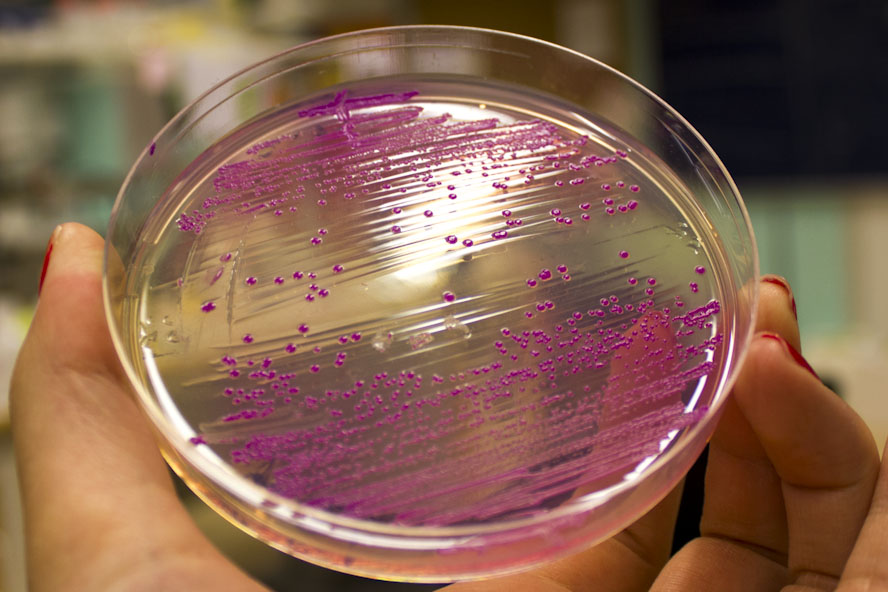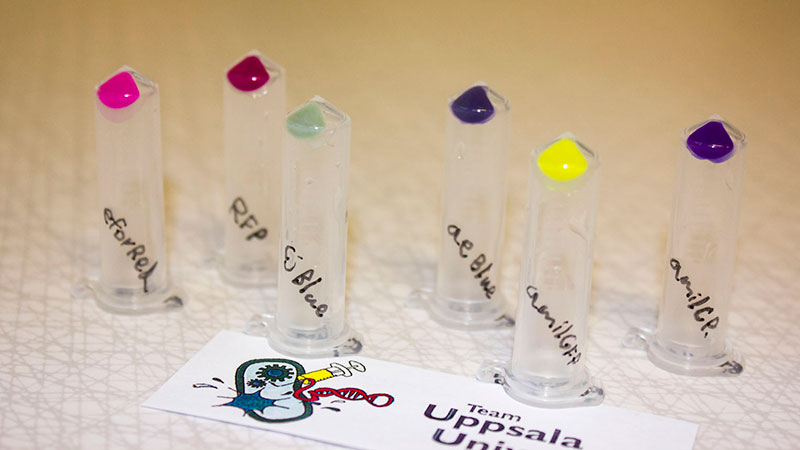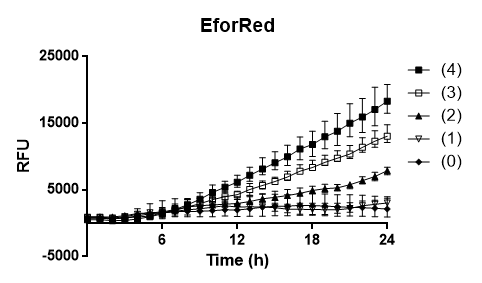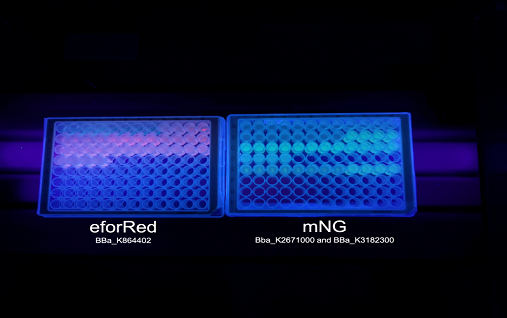Part:BBa_K864402
J23110-B0034-eforRed
eforRed eforRed is previously described as BBa_K592012. We submitted a functionally active variant with J23110 and B0034.
Contribution
Group: Linkoping_Sweden iGEM 2019
Author: Andreas Holmqvist and Leo Juhlin
Summary:
In this contribution we characterized the visual absorbance and the fluorescence of this construct. We also tested the oxygen dependency of the protein expression in E. coli BL21(DE3) cells and then measured the absorbance of the cells with a plate reader (spectrophotometer).
Documentation:
- the BBa_J23110Constitutive promotor
- the BBa_B0034Ribosome binding site
To verify eforRed's absorbance and emission, the construct was expressed in E. coli BL21 (DE3). The bacteria containing the constitutive promotor (pCons) was compared to a negative control (figure 1). Thereafter the eforRed expressing bacteria was centrifuged, resulting in a pellet with a burgundy color. (Figure 1, top-right corner). To demonstrate the fluorescence of eforRed, the pellet was placed on a UV-table emitting a wavelength of 302 nm, (figure 1, down-right corner), which exhibited a pink glowing colour. The culture tubes had a constant supply of oxygen by using cotton plugs which is important for the folding of the eforRed chromophore, therefore leading to increased expression.
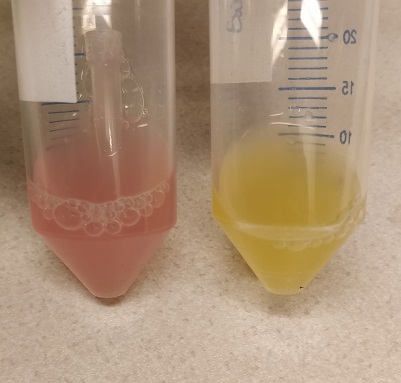
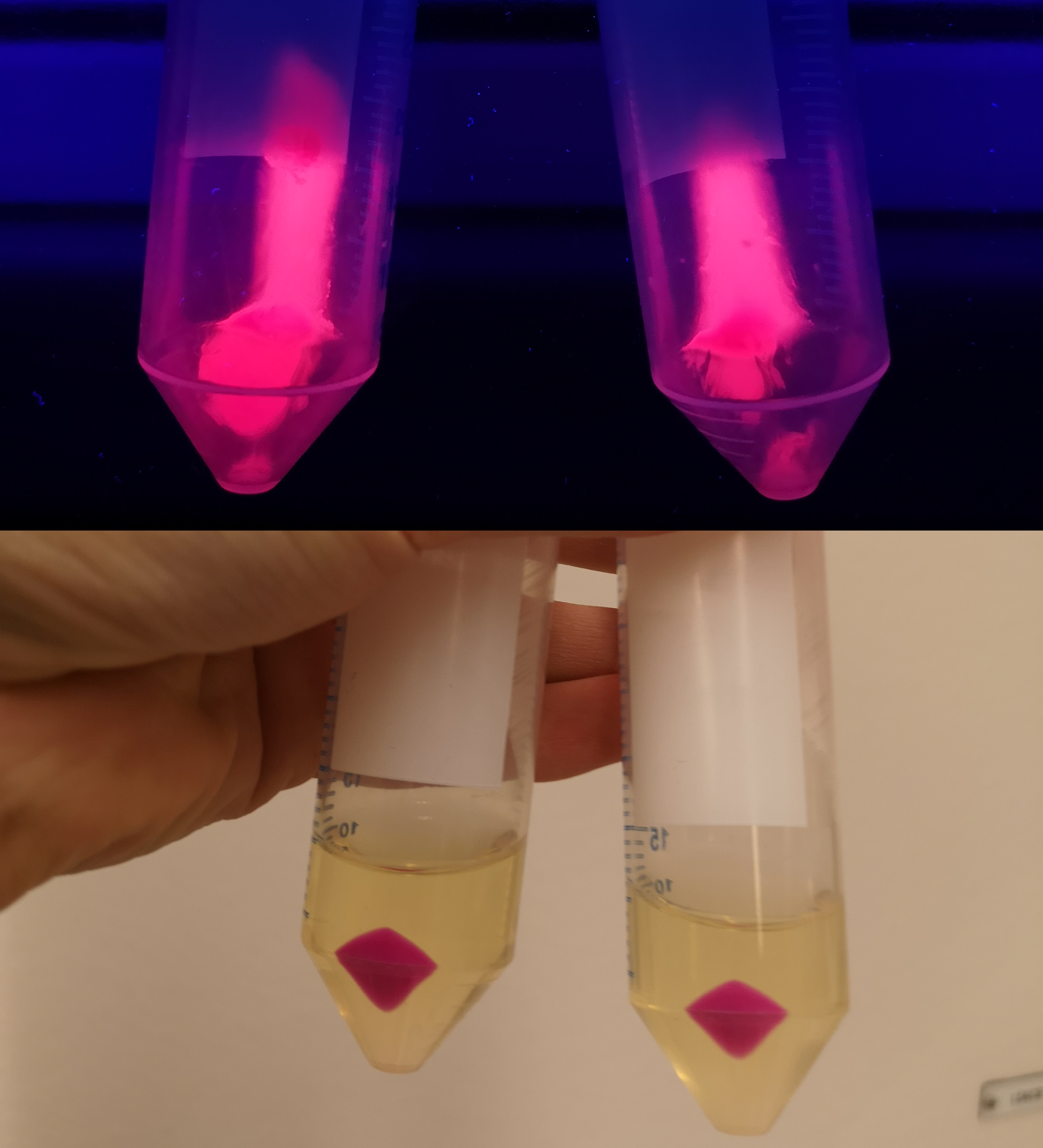
Further characterization was performed in order to demonstrate the absorbance and fluorescence of E.coli BL21 (DE3) containing pCons eforRed. An eforRed culture was spread on an LB-agar plate containing 25 µg/ml chloramphenicol. The agar culture were photographed in visual light and on a UV-table emitting 302 nm (figure 2). The results were the same as above, in visual light (Figure 2, right) the cultures had a burgundy color and on the UV-table the bacteria exhibited a pink glowing colour ( Figure 2, left).
To test the oxygen dependency of the protein production of eforRed in E.coli BL21 (DE3) , a platereading was conducted. The oxygen access was varied by piercing different numbers of holes in the plastic film of the 96-well plate. The experiment showed that 4 holes in plastic film gave the highest protein yield and that the access to oxygen effects E. colis BL21 (DE3) production of eforRed..
A study of the molecular weight of p.Cons-eforRed expressed in E. coli BL21 (DE3) was done by sonicating the cells and then performing a SDS-PAGE electrophoresis on the lysate (Figure 4.) with Biorads "Precision Plus Protein Dual Color Standards" as the protein ladder.
Sequence and Features
| None |

